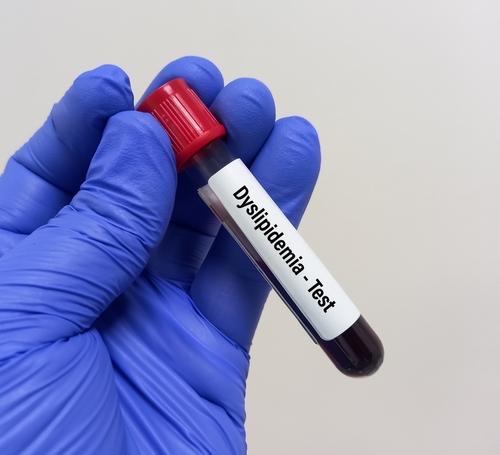
What is Dyslipidemia?
Dyslipidemia is defined as having blood lipid levels that are too high or low. HDL, LDL, and triglycerides are the three primary types of lipids in your blood. Blood lipids are fatty substances, such as triglycerides and cholesterol.
LDL cholesterol is known as the unhealthy form of cholesterol. This occurs when it accumulates and creates clumps or plaques within your artery walls. HDL cholesterol is considered “good” as it aids in removing LDL from your bloodstream. Triglycerides are derived from unburned calories consumed. Fat cells store triglycerides. Elevated levels of LDL and triglycerides increase the likelihood of heart attack and stroke. When HDL cholesterol levels are low, the risk of heart disease increases.
According to Ayurveda, high cholesterol is known as “Medovriddhi,” with “Meda” representing lipids and “Vriddhi” meaning increase. The goal of Ayurvedic treatments is to harmonize cholesterol levels using diet, lifestyle modifications, and herbal remedies.

Ayurvedic Approach to Treating Dyslipidemia
Ayurveda states that dyslipidemia is characterized by abnormal Medas in the rakta dhatu. Vyana vata carries Kapha dosha in the rasa-rakta vaha srotas, with Medhas serving as its ashraya. Agni’s metabolic activities are accountable for the variations in dosha, dhatu, and mala. When Agni is impaired, it results in the formation of ama in the body, which accumulates in abnormal areas. This accumulation of ama in rakta and rasa is known as leenatwa of ama in dhatus. Therefore, the approach to dyslipidemia treatment centres on restoring dosha balance and removing ama from the body. With a holistic approach, the entire treatment line results in a complete reversal of the condition.
Ayurveda considers Dyslipidemia or Hypercholesterolemia as the result of toxins building up in the body channels. When digestion is impaired at the tissue level, it results in an excess of toxins that accumulate and create blockages in the channels. The treatment plan at Ayur Bethaniya Ayurveda Hospital aims to balance overall fat metabolism in the body through a combination of dietary recommendations and treatment procedures. The treatment plan focuses on addressing the underlying cause of high cholesterol levels. It involves massages and ayurvedic remedies to rebalance the body and cleanse the channels, as well as restore digestion.
Customized treatment plans are created based on the patient’s health condition, incorporating treatments such as snehapana, followed by cleansing techniques such as virechana or vamana to expell out the leena doshas and ama from the body, along with external treatments like powder massage (udwarthana) to facilitate the conversion of body fat. Herbal medications made from natural herbs are given to lower cholesterol and enhance body immunity and strength. It is advised to follow diet plans that include easily digestible and absorbable foods during treatment. To enhance blood circulation, digestion, and excretion, it is recommended to incorporate regular physical activities, including Yoga asanas.
At Ayur Bethaniya Ayurveda Hospital, we offer secure and efficient treatment options along with personalized treatment plans and lifestyle changes to manage and regulate high- and low-density cholesterol levels in the body. Schedule an appointment now to learn about additional treatment options for Dyslipidemia.
Check out our Ayurvedic treatment for weight loss and Ayurvedic treatment for diabetes.


